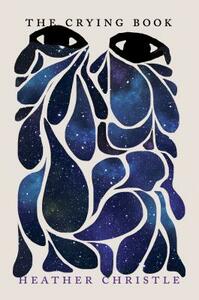You need to sign in or sign up before continuing.
Take a photo of a barcode or cover
emotional
reflective
fast-paced
really enjoyed this read as someone who cries a lot. 5/5
Graphic: Suicide, Grief, Mass/school shootings, Pregnancy
challenging
dark
emotional
funny
informative
inspiring
lighthearted
reflective
sad
medium-paced
"A real tear that you can taste, a moon that has nothing to do with crying. (The latter does not exist.)"
Is a quote I will 100% be thinking about forever
Is a quote I will 100% be thinking about forever
Poetry - and like all poetry, some parts resonated while others didn't. Some felt like a punch to the gut.
Me parece que es una buena idea ejecutada muy a prisa. Pudo haber sido mucho más exploratorio y profundo y Fermina siendo muy limitado y en ocasiones innecesariamente melodramático.
I don’t know why I thought this book would be more scientific when I found it in the poetry section at the library, but alas...
sad
fast-paced
was expecting more, but did like these bits:
~ the idea of returning to old hotmail inboxes to "see who we were"
~ describing a highlighter's function to a child as "you use it to color in the words you like"
~ this line from a frank o'hara poem: "and in a sense we're all winning. we're alive"
~ moods "vibrating at such a high frequency it seems like they might develop bodies of their own"
~ the idea of returning to old hotmail inboxes to "see who we were"
~ describing a highlighter's function to a child as "you use it to color in the words you like"
~ this line from a frank o'hara poem: "and in a sense we're all winning. we're alive"
~ moods "vibrating at such a high frequency it seems like they might develop bodies of their own"
This is a book that lives in juxtaposition and connective tissue. The language is beautiful, and the collage of snippets can be incredibly powerful. The pace is unhurried as Christle slowly unfurls the web of associations with the concept of crying and plods through the disparate pieces. The slow unfurl is confident and gives the time to see that connective tissue, but at times, it feels like the piece has stalled entirely.
The section on white women's tears felt necessary, but—even in a section that criticizes the weaponization of white women's tears against Black people—there is an odd emphasis on the life of a white woman who dies of a heart attack after seeing a Black boy shot rather than on the person who was murdered. While this is mentioned to highlight the irony of the situation (that the very cop who was trying to "protect" this white woman was indirectly responsible for the heart attack that killed her), the section felt unwieldy, and like it reinscribed some of the same notions it sought to challenge.
The section on white women's tears felt necessary, but—even in a section that criticizes the weaponization of white women's tears against Black people—there is an odd emphasis on the life of a white woman who dies of a heart attack after seeing a Black boy shot rather than on the person who was murdered. While this is mentioned to highlight the irony of the situation (that the very cop who was trying to "protect" this white woman was indirectly responsible for the heart attack that killed her), the section felt unwieldy, and like it reinscribed some of the same notions it sought to challenge.






